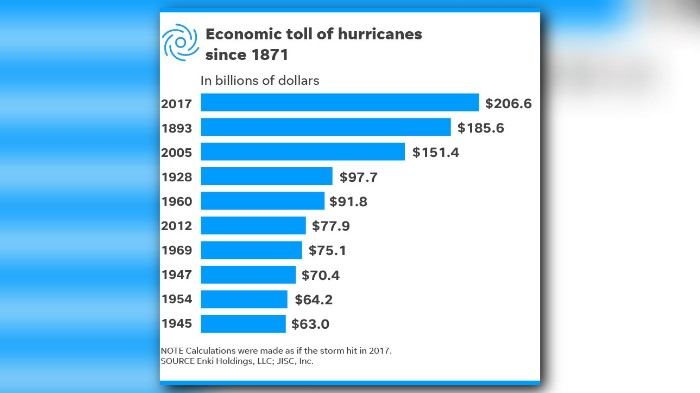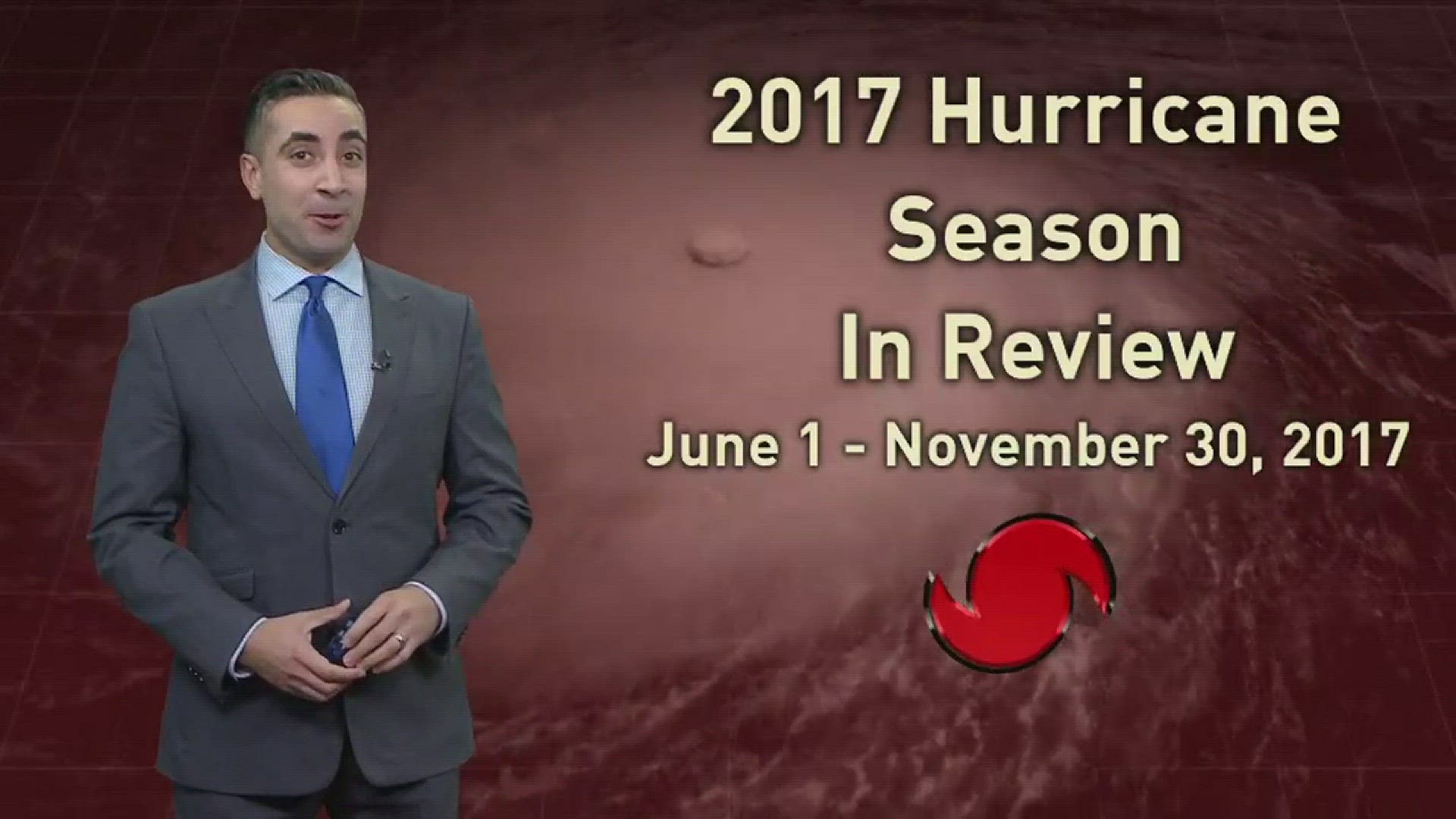The 2017 Atlantic hurricane season — by some measures the worst on record — officially comes to a merciful close Thursday after leaving a path of death and destruction in the U.S. and the Caribbean.
Monster storms like Harvey, Irma and Maria killed dozens, perhaps hundreds of people and caused more than $206 billion in economic impact — a toll that will largely fall on individuals and the government to pay, according to one estimate from ENKI Operations.
Those three names will certainly be retired by the National Hurricane Center due to their ferocity and impact in Texas, Florida, Dominica, Puerto Rico and the U.S. Virgin Islands.
If that $206 billion estimate holds, it would be the costliest hurricane season in U.S. history, even topping the disastrous 2005 season, which featured Katrina. Final cost estimates from the National Oceanic and Atmospheric Administration — the official tally from the federal government — won't be available until early in 2018.
Of the total, insurance covered roughly 30%, said disaster research scientist Chuck Watson of ENKI Operations. That figure is well within insurance companies' capacity to pay, meaning premiums are unlikely to skyrocket, he said.
However, the remaining cost will be paid by individuals, who may have little or no insurance, and the government, in the form of loans or grants. Coupled with the disastrous wildfires in California, federal disaster relief money will have to come from somewhere and that could eventually mean changes in spending priorities or higher taxes, Watson said.
The 2017 losses included $114 billion from Hurricane Harvey, $60 billion from Hurricane Irma and $32 billion from Hurricane Maria, according to ENKI Operations.

The season was a shock to the system after several relatively quiet years for hurricanes. The prevailing weather pattern this year was quite a bit different from the past decade during the USA's major landfalling hurricane drought, according to Colorado State University meteorologist Phil Klotzbach. "The storms this year were forced further west by a pretty strong subtropical high that prevented recurvature" out to sea, he said..
September was the true behemoth, the single most powerful month ever recorded in the Atlantic in terms of hurricane intensity.
In a statistic known as "Accumulated Cyclone Energy" (ACE), Hurricanes Irma, Katia, Jose, Lee and Maria that month generated the largest amount of energy for any month on record, according to Klotzbach.
ACE is calculated by adding each tropical storm or hurricane's wind speed through its life cycle. Long-lived, intense hurricanes have a high count (Irma's ACE measured 67.5), while short-lived, weak tropical storms have a lower values (Katia came in at 6.1), according to Weather.com.
Both Irma and Maria soared to Category 5 strength, the top of the Saffir-Simpson scale of hurricane intensity. Irma’s landfall on Barbuda and Maria's landfall on Dominica makes 2017 only the second season on record to feature two hurricanes that hit at Category 5 strength.
Other records from the season included the 60.58 inches of rain that fell near Nederland, Texas, during Harvey. This broke the record for the greatest rainfall amount ever recorded in the Lower 48 from a single storm, WeatherBug reported.
Meanwhile, Irma was the strongest storm on record in the Atlantic (excluding the Caribbean and Gulf of Mexico) with maximum winds of 185 mph. And Maria was the worst natural disaster in Puerto Rico's history.
The 2017 Atlantic hurricane season was also the first season on record (since 1851) to have two Category 4 hurricanes make continental U.S. landfall in the same year (Harvey and Irma), according to Klotzbach.
Though the official end of the season is Thursday, December tropical storms and hurricanes, while rare, do occasionally occur. Since records began in 1851, only six hurricanes have been recorded after Nov. 30, NOAA said.
As for preseason forecasts, NOAA said 2017 would see 5 to 9 Atlantic hurricanes (10 formed) while Colorado State predicted six.
Meteorologist Steve Bowen of global reinsurance firm Aon Benfield said that “regardless of where the final seasonal totals end up from a financial standpoint, 2017 will long be remembered as one of the costliest and most devastating hurricane seasons ever experienced in this country. The hope is that the season will provide many learned lessons to improve awareness and risk mitigation for when the next big storm arrives.”
"If 2017 taught us anything, it’s that the question is never 'if' the United States will endure a significant hurricane event; it’s 'when' and 'where' the landfall will occur and 'how' we will be prepared," Bowen said.

